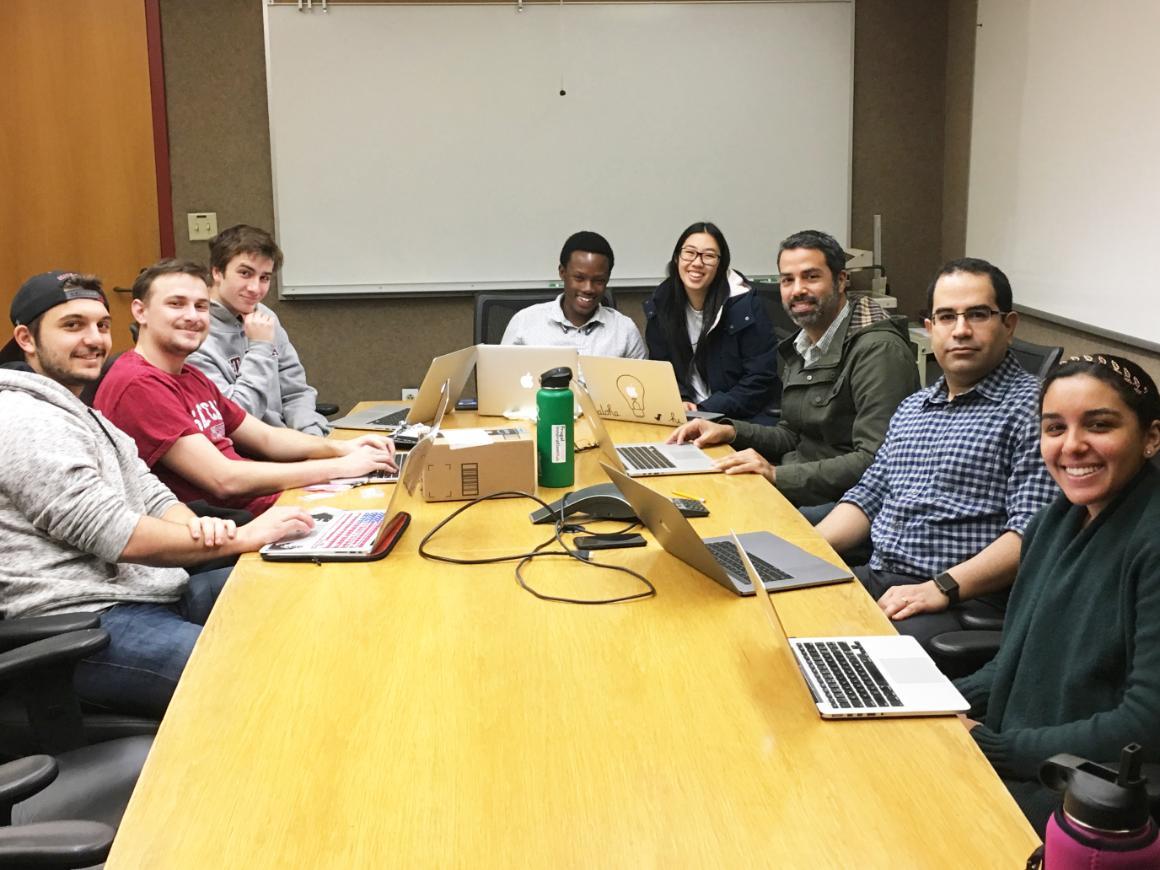
Fixing a Failure to Communicate
Following a devastating 2017 flood that caused $100 million in damage, affected 14,000 residents, and left hundreds homeless for months, city and public works officials in San Jose, California, were roundly criticized for their lack of foresight and communication failures during the days and hours leading up to the catastrophic event. Citizens reported that their first warning of an imminent threat was hearing firefighters outside their doors ordering their evacuation. In the months after the flood, when the city commissioned an analysis of what went wrong, Mayor Sam Liccardo immediately took action, accepting responsibility for the city’s failures, “and for ensuring it never happens again.”
Taking a step in that direction, the Mayor’s Office recently began working with the School of Engineering’s Frugal Innovation Hub on a pilot program for a set of solutions to detect an imminent flooding situation in San Jose. “Four teams of undergraduate and graduate engineering students are developing an IoT system that could be installed on up to 50 bridges to detect water surge, debris accumulation, color of water, and the type of materials being carried in the water,” said Allan Báez, the Hub’s director of programs and partnerships. Báez advises the students along with Dr. Behnam Dezfouli, assistant professor of computer engineering, who serves as technical leader for the group. Dezfouli is guiding the students toward building bridge-attached IoT devices as well as a cloud system for central collection, processing, and distribution of data, and mobile apps for receiving updates and alerts. He reports, “The collected data would be transmitted to a cloud platform through a wireless mesh network. The system will rely on both edge and cloud computing to analyze sensor and vision data. Anomaly detection would result in dispatching warnings to city officials and to the neighborhoods.”
Computer engineering master’s student Salma Abdel Magid ’17 and junior Francesco Petrini are using machine learning for image recognition to devise an algorithm to process images and detect debris and other materials being carried in the water. “Finding the right open source machine learning library and system optimization to achieve an acceptable processing delay and energy consumption level on a very resource-constrained IoT device such as Raspberry Pi is challenging,” Magid said. After testing their camera for face recognition, the pair began modeling for debris to test how the system operates. Petrini reports, “We found our image classification of animals, and even a vending machine, to be 99 percent accurate. But we need to make it faster and more energy efficient.”
Electrical engineering undergraduates Naeem Turner-Bandele and Taylor Mau (who is double majoring in computer science and engineering) are working on solar energy harvesting for the system, determining the power needs, voltage, and current levels for the different components. “The system needs to recharge quickly, but the battery should be small. The electronics used for harvesting have to be very energy efficient, so we’re studying the energy consumption of a variety of operations to ensure the system provides enough power,” said Turner-Bandele. Dr. Dezfouli added, “The design of the energy harvesting sub-system depends on various factors. Most important, we need to ensure it can handle sudden variations in power consumption caused by computation and wireless transmission.”
Long-range wireless communication for the device is a must, and Esha Jhamb, computer science and engineering master’s student, and electrical engineering senior Nicholas Schnabel have that covered. With WiFi unavailable in some areas, the team needed a solution that did not use the LTE network for long-range and high data rate transmission to city and county officials of the images and other information collected by the sensors; at the same time, their method had to be frugal in its use of power. Schnabel explained, “We’re researching LoRaWAN [long-range, low power Wide Area Network] and developing very efficient drivers to minimize the overhead of communication. We need to make sure there is no data loss due to environmental interference. Reliability and energy efficiency are very important, but one of the biggest challenges is to establish a mesh network that covers a large area.”
Glen Chandler, computer engineering junior, and Immanuel Amirtharaj ’17, computer science and engineering graduate student/research assistant are tackling the final components—a mobile application for human reporting of changes in creeks or rivers, and an alert system for notifying affected residents of a developing situation. “The Mayor’s Office has identified community leaders who would monitor the waterways and report data through our app using the same parameters our bridge sensors use—color of water, debris, etc. As city and county officials determine a threat is evolving, citizens would be kept apprised with updates and notifications so no door-to-door action would be needed,” explained Chandler.
Though working independently in teams, the entire group gathers weekly to maintain continuity, and they regularly meet with the mayor’s policy advisor. As the project progresses they will interface with San Jose’s Office of Emergency Services.
“It’s gratifying for all of us to be part of this pilot program with the City of San Jose,” said Báez. “Last year there was no reliable system of detection or warning, and information came too late. Our students’ system could help officials make better decisions on when to evacuate and keep residents informed of what is happening in their neighborhoods.”